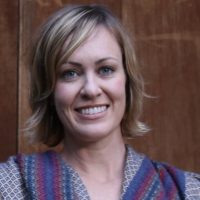Breath work is a broad term that includes a variety of different breathing practices that often use conscious control of the breath.
In my personal practice, I have been guided by experienced practitioners and teachers in different breath work practices that have offered coping strategies for pain management and healing.
Participation in such practices has been beneficial, educational, and enjoyable, and at times, quite honestly, uncomfortable. However, I continue to experience benefits and access these methods to manage and maintain a healthy and balanced lifestyle.
Breathing is a basic function that, over time, many of us come to take for granted. Inevitably, our attention leaves our breath and becomes focused on other details of life that, in turn, impact the quality of each breath we take, and ultimately the way we experience each precious moment.
Through physiological, emotional, and spiritual traumas, our breath takes on a new shape over time. Often the breath takes on shallowness or patterns of holding and perpetuating stress and its associated manifestations, which can challenge health and wellness, bringing us from a place of thriving to a place of surviving.
It can be incredibly overwhelming and challenging to begin a new practice of any kind, so I have organized four helpful tips to support a successful breath work practice:
1. Begin with patience and compassion
The subtle body does not come easily to everyone, especially at first. Essentially, mindfulness is the practice of paying attention to thoughts and feelings as they arise without analyzing their origin or meaning. Mindfulness allows us to perceive what is occurring in a non-judgmental state, letting go of expectation and the need to identify cause. Observations allow us to take each experience, defusing the perspective and easing the perception of any given moment.
Shifting from experiencing to observing can become quite powerful, and can offer space for growth and healing in developing compassion for ourselves and others. Initiating a practice of observing our body breathing, whether for the first time ever or the first time today, can be softened with truly heartfelt love and compassion toward the self and identifying gratitude for the opportunity we have elected to take for ourselves.
2. Make observations
Observations allow us to take each experience and both diffuse our perspective and shift our perception of it. This practice offers space for growth and softening in compassion for ourselves and others.
Finding a grounded position is a great place to start any mindfulness practice. If choosing a seated position, place both feet on the ground and sit with an elongated spine while placing hands palms down on top of thighs, which can feel supportive and grounding. Taking a supine position may offer a grounding effect for some bodies, as feeling the entire back body supported can offer a sense of comfort and ease.
When you have allowed yourself to settle, simply begin by dropping into the sensation of the body breathing. Notice, without trying to control. Perhaps tension is observed on inhalation, exhalation, or both. Without trying to analyze or control the breath patterns, simply observe—starting with the body as a whole. Do you feel symmetrical? Identify where each breath enters the body. Notice what happens next.
This practice may seem simple, but can be incredibly challenging. Continue to offer yourself patience, compassion, and gratitude for your willingness to engage in this practice of self-care.
3. Process
After becoming more aware of your breath, you may find yourself feeling overwhelmed with questions. Am I doing this right? How is this supposed to feel? Where do I go from here? Revisiting the concepts of patience and compassion, and observing without judgement, can be a challenging yet rewarding exercise. Taking some time to reflect after a mindful breathing practice can be a helpful way to identify patterns.
Also, consider taking some time to journal about your experience. Recall the sensations that occurred and what parts of the body you noticed. It may also be helpful to identify the parts of your body that you did not notice at all.
4. Rinse and repeat
After reflecting on your experience, offer yourself several opportunities to observe the body breathing. Re-initiate this practice after finding a grounding body position, taking as much time as needed. As you become more familiar with noticing the subtle body breathing, expand your practice. Drop into the awareness of breath during various times of the day. Consider a short mindful breath practice before, after, or during different experiences. You may begin to notice other sensation details, as building awareness takes time and practice.
If you continue to find this practice challenging, try a guided breath inquiry practice. You can find these on several meditation apps and on YouTube. I also offer a free guided Mindfulness Breath Exploration. As you begin to feel more familiar with this practice, remember to continue strengthening your muscles of patience and compassion.
Taking it a step further
Using mindfulness as part of a breath awareness practice is a great place to start. Mindful breath brings sensory awareness to how and where the breath is experienced in the body without judgement or control. Perhaps you are able to identify a pattern or area of tension.
Shallow breathing and holding patterns occur with the absence of the diaphragm. When the diaphragm muscle is actively engaged, it supports efficient and effective inspiratory and expiratory cycles, bringing in freshly oxygenated air, releasing toxins, and allowing for space to expand and heal. At times, tension becomes reinforced instead of released—holding on instead of letting go. These patterns do not always develop instantly, rather subtly shifting over time and continuing to evolve unless otherwise guided.
Life can too often become busy and feel overwhelming, creating unhealthy breathing habits and postures, which over time become usual and rote. Finding your way back to optimal breathing patterns after overcoming habits takes time and patience.
Beginning with an open mind—ready for observation—and dropping in to the sensation of the body breathing can help you reacquaint yourself with your breath. Setting an intention to offer yourself compassion, patience, and gratitude for making the time and taking the opportunity to begin a breath work practice can be a powerful way to cultivate a shift back from surviving to thriving.
~












Read 0 comments and reply